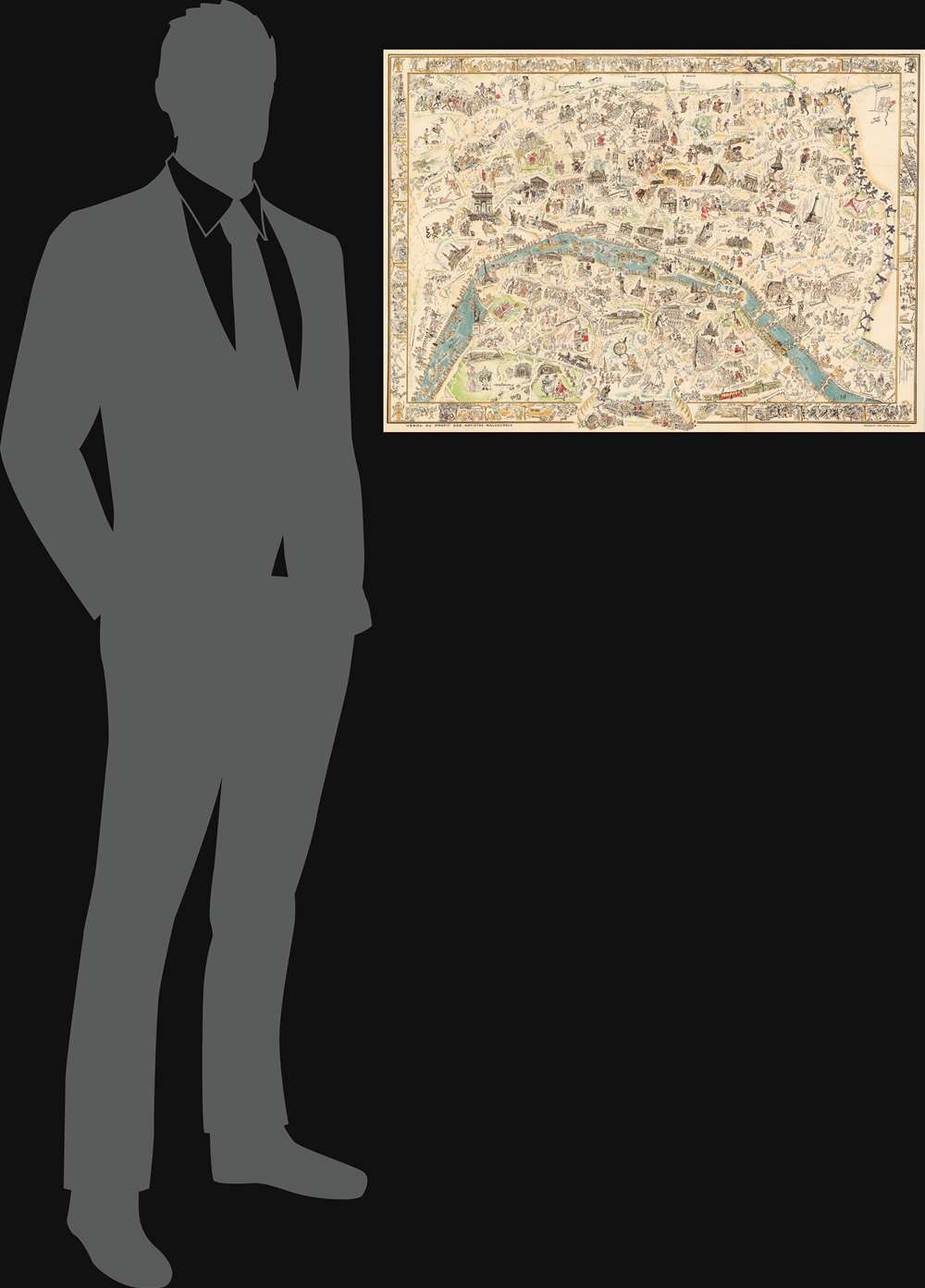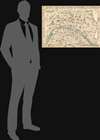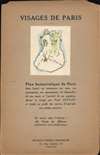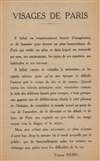Digital Image: 1933 Jeffay Pictorial Map of Paris, France
ParisHumoristique-jeffay-1933_d
Title
1933 (dated) 21.5 x 30.25 in (54.61 x 76.835 cm)
Description
FOR THE ORIGINAL ANTIQUE MAP, WITH HISTORICAL ANALYSIS, CLICK HERE.
Digital Map Information
Geographicus maintains an archive of high-resolution rare map scans. We scan our maps at 300 DPI or higher, with newer images being 600 DPI, (either TIFF or JPEG, depending on when the scan was done) which is most cases in suitable for enlargement and printing.
Delivery
Once you purchase our digital scan service, you will receive a download link via email - usually within seconds. Digital orders are delivered as ZIP files, an industry standard file compression protocol that any computer should be able to unpack. Some of our files are very large, and can take some time to download. Most files are saved into your computer's 'Downloads' folder. All delivery is electronic. No physical product is shipped.
Credit and Scope of Use
You can use your digial image any way you want! Our digital images are unrestricted by copyright and can be used, modified, and published freely. The textual description that accompanies the original antique map is not included in the sale of digital images and remains protected by copyright. That said, we put significant care and effort into scanning and editing these maps, and we’d appreciate a credit when possible. Should you wish to credit us, please use the following credit line:
Courtesy of Geographicus Rare Antique Maps (https://www.geographicus.com).
How Large Can I Print?
In general, at 300 DPI, you should at least be able to double the size of the actual image, more so with our 600 DPI images. So, if the original was 10 x 12 inches, you can print at 20 x 24 inches, without quality loss. If your display requirements can accommodate some loss in image quality, you can make it even larger. That being said, no quality of scan will allow you to blow up at 10 x 12 inch map to wall size without significant quality loss. For more information, it is best consult a printer or reprographics specialist.
Refunds
If the high resolution image you ordered is unavailable, we will fully refund your purchase. Otherwise, digital images scans are a service, not a tangible product, and cannot be returned or refunded once the download link is used.
Cartographer
Paul Jeffay (April 29, 1898 - 1957) was a Scottish artist. Saul Yaffie (Paul Jeffay was a pseudonym) was born in Blythswood, Glasgow to Russian immigrant parents Kate (née Karkonoski) and Bernard Yaffie. Kate and Bernard fled Russia in 1881 to escape pogroms set off by the assassination of Tsar Alexander II. They were among the first 20th century Jewish immigrants to settle in The Gorbals, the neighborhood that became the heart of the Glasgow Jewish community. Bernard was a master tailor, whose business eventually prospered, allowing the family to move to a more affluent neighborhood. Yaffie attended classes at the Glasgow School of Art from 1912 through 1919. While at the school, Yaffie won a poster competition at the outbreak of World War I and this work, illustrating a woman with a child fleeing a fire, was displayed on Glasgow's trams. His studies were interrupted by service in the British Army from 1916 - 17. Records indicate before his time in the army (which was either voluntary or conscription - Yaffie's biographies do not agree on this detail), Yaffie worked in munitions. During his service, Jeffay reached the rank of corporal and likely served with the 38th Battalion of the Royal Fusiliers, part of the so-called Jewish Legion. However, records from the Glasgow School of Art suggest that he served with the King's Own Scottish Borderers as well. After graduating from the Glasgow School of Art after the war, Yaffie decided to 'try his luck' in Paris. He spent the rest of his life in Paris (except for World War II years when he and his wife Estusia left France and went to Glasgow and then settled in Manchester). It was during his time in Paris that Yaffie began signing his art as Paul Jeffay. While Yaffie was making his way in the art world in Paris, his father's tailoring business suffered because of the post-war economic depression, which led him and the rest of the family to emigrate to Canada. Yaffie exhibited his work several times in Paris during the 1920s and 1930s, including at the Salon des Artists Indépendants. His studio in Fontenay-aux-Roses was looted by the Germans during World War II, so very little of his art survives. One of his most well-known series, entitles Visages du ghetto is a series of fourteen etchings created in a Polish ghetto (likely Warsaw) during the Interwar years when he reportedly traveled to Poland several times. More by this mapmaker...








